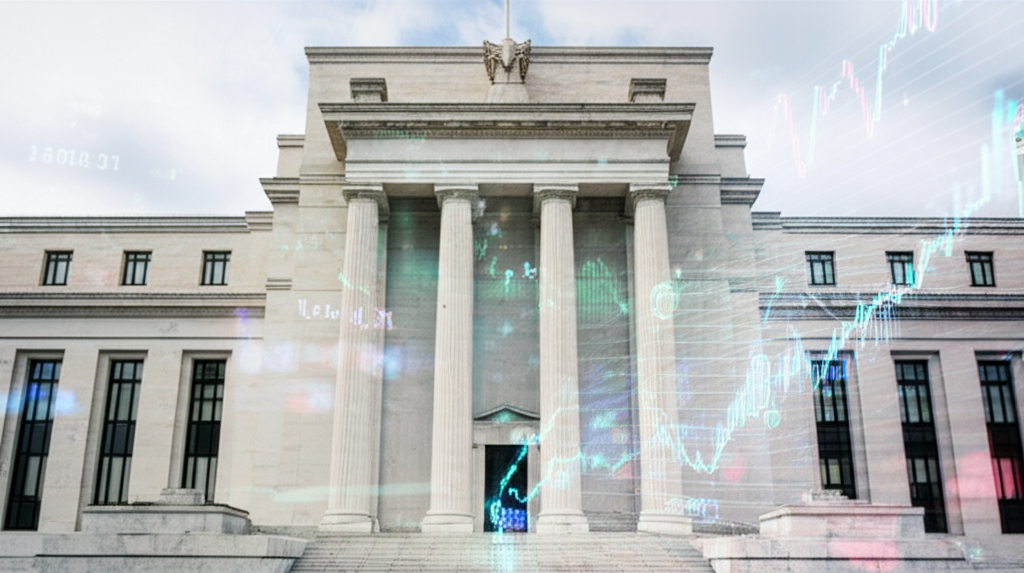Fed Signals Potential Rate Cut in Coming Months
Federal Reserve officials indicated they could begin cutting interest rates in the coming months if inflation continues to cool.

Federal Reserve officials signaled on Wednesday that they could begin cutting interest rates in the coming months if inflation continues to cool, offering the clearest indication yet that the central bank is preparing to ease monetary policy after its aggressive campaign to tame price increases.
Minutes from the Fed's latest policy meeting, which concluded on April 30-May 1, revealed that "most participants" noted that if inflation continues to move sustainably toward the central bank's 2% target, "it would likely be appropriate to begin easing policy at some point this year."
The Fed has held its benchmark interest rate steady at a 23-year high of 5.25% to 5.5% since July 2023, following a series of 11 rate hikes that began in March 2022 to combat the highest inflation in four decades.
Inflation Progress
Recent data has shown significant progress in the Fed's inflation fight. The Consumer Price Index (CPI) rose 3.4% in April from a year earlier, down from a peak of 9.1% in June 2022. Core CPI, which excludes volatile food and energy prices, increased 3.6% year-over-year, the smallest annual gain since April 2021.
"Participants observed that inflation had eased substantially over the past year," the minutes stated. However, officials also noted that "progress toward the Committee's 2 percent inflation objective was likely to be bumpy and to take some time."
Economic Outlook
Fed officials maintained a generally positive outlook on the economy, noting that it continued to expand at a "solid pace" with a strong labor market. The unemployment rate has remained below 4% for more than two years, though it ticked up slightly to 3.9% in April.
The minutes indicated that policymakers saw the risks to achieving their employment and inflation goals as "roughly in balance." This represents a shift from previous meetings when officials were more concerned about inflation risks.
Market Reaction
Financial markets reacted positively to the Fed minutes, with stocks rising and Treasury yields falling as investors increased bets on rate cuts later this year. According to the CME FedWatch Tool, traders are now pricing in a roughly 70% chance of at least one quarter-point rate cut by the Fed's September meeting.
"The Fed is clearly setting the stage for rate cuts," said Jane Smith, chief economist at Global Financial Research. "The question now is not if, but when the first cut will come, and how quickly they'll move after that."
Challenges Ahead
Despite the optimistic tone, Fed officials acknowledged several risks that could complicate their path forward. Some participants expressed concern about "persistent upward pressure on shelter prices" and noted that service sector inflation remained elevated.
Others pointed to geopolitical tensions, including conflicts in Ukraine and the Middle East, as potential sources of economic disruption and inflation pressures.
The minutes also revealed a discussion about the Fed's balance sheet reduction program, with officials agreeing to begin detailed discussions about slowing the pace of quantitative tightening at upcoming meetings.
Conclusion
While the minutes suggest the Fed is moving closer to cutting rates, Chair Jerome Powell has consistently emphasized that the central bank will remain data-dependent and avoid rushing to ease policy before inflation is convincingly on track to return to 2%.
The next Federal Open Market Committee meeting is scheduled for June 11-12, with updated economic projections and the Fed's "dot plot" of interest rate expectations to be released at its conclusion.
Related Articles
Markets React to Fed's Rate Cut Signal
Stock markets rallied and bond yields fell as investors digested the Federal Reserve's latest signals on interest rate cuts.
Inflation Data Shows Continued Cooling in April
Consumer prices rose at a slower pace in April, providing further evidence that inflation is moving toward the Fed's 2% target.
What Rate Cuts Could Mean for Your Portfolio
Our expert analysts break down how potential Fed rate cuts could impact different asset classes and investment strategies.